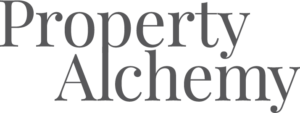OK, if you live in Australia you are likely to have (or think you have) a good understanding of the investment property market.
With our passion for property, a day rarely goes by where we don’t have discussions about property values and markets.
When it comes to some of the number terminology, however, statistics show we may not be as conversant as we think!
In our blog, we will provide a quick (but easy to understand) lesson in numerical terminology as it relates to investment property. These are some base terms you really do need to understand if you are in, or considering the investment property market.
After all, we discuss and argue the increasing cost of a cup of coffee, but seemingly let hundreds of thousand, even millions of dollars get transacted without really knowing the fundamental numbers.
So, here we go.
Rental yield
Basically, rental yield is calculated on an investment property as you are seeking to secure income from it.
In simple terms, it is a measurement of future income on your investment and the higher the yield, the better the return you are getting.
It is generally calculated annually as a percentage on the investment cost or market value and has nothing to do with a capital gain on a property.
To calculate your rental yield, simply take the weekly rental amount and multiply by 52 weeks – so a full year. You then divide this by the current property value and then multiply by 100.
For example.
- Current rent: $500 a week
- Annual rent: $500 x 52 weeks = $26,000
- Current property value: $600,000
- Rent divided by property value: $26,000 / $600,000 = 0.043 per cent
- Rental yield: 0.043 x 100 = 4.3 per cent
Remember these figures will change if the rent or property value changes – but the same formula will apply.
Investment property growth
This is typically calculated as a capital growth – the percentage increase in the price of your property over time; or rental yield – the increase in your rental return over time.
For our purposes, we won’t look at the tax implications of these two growth vehicles.
Capital growth
In base terms, capital growth is the increase in value of your investment property or property portfolio over time and should always be considered alongside the investment property’s yield.
The reason for this is because in Sydney and Melbourne in particular, there have been recent periods where capital value has doubled over a short period.
This impacts rental yield negatively as while the property value has gone up dramatically, the rental values have not. After all, you can’t increase rent at the same rate as the capital growth we have just experienced!
Don’t worry. This is not a bad thing if your original purchase price for the property remains unchanged- i.e., you have not increased your loan, then you will have enjoyed dsignificant capital gains.
Rental (net) yield growth
An age old argument. Are rental yield increases better than capital growth increases?
Of course this is entirely dependent on how you view your investment. Some investors are more concerned about long term capital growth while others are more cash flow focused so want to see higher rental return.
Net yield
What is valuable to know as an investor is how to calculate your net yield. To do this, you’ll need to know or estimate:
Expenses
Annual expenses including managing agent fees, vacancy costs (lost rent and advertising), repairs and maintenance, insurance(s), strata levies (if applicable), and rates.
Property costs
Total property costs including purchase price plus transaction costs (e.g. stamp duty, legal fees, pest and building inspections, loan set up and loan fees and the cost of any renovations or furnishings needed before tenants can move in.
Then, as we did in determining rental yield, we apply a similar formula.
So, for net yield we take the annual rental income minus your annual expense to determine your profit. You then divide your profit by total property purchase costs and then multiply by x100.
So, using the same rent as our last example:
- Annual rent: $26,000 ($500 a week)
- Annual costs: $6,000
- Profit: $20,000
- Property purchase and costs: $445,000
- Profit divided by property costs: $20,000 / $445,000 = 0.04
- Net Yield: 0.04 x 100 = 4.49 per cent
Remember these figures will change if the rent or property value changes – but the same formula will apply.
Median prices
Investors and indeed many people, often get confused by what ‘median’ actually means.
For simplicity, median means in the middle. So, with regard to an investment property list (sale) price, half of the homes listed are above this price and half are below.
For example, let’s say there are 5 homes for sale in a market at prices of $350,000, $400,000, $450,000, $600,000, and $650,000 – the median (middle) price is $450,000.
This is not the same as average price where in this example, we would add all the property prices up – so, $2.45m and divide by the number of properties – so 5. This gives us an average price of $490,000.
The value of using median prices is that it can show a ‘trending’ market. For example, if the median listing price is trending down, it may take longer to sell a home and buyers may have more bargaining power. If the median listing price is trending up, the market may be hotter and homes will sell more quickly.
The long and the short
If you are investing or considering investing, having property numeracy skills will help you better understand your property and the shifting market.
At Property Alchemy, we are specialist property managers, so not only understand property numbers, but how to help with the best investment opportunities, tenant selection, property care and long-term investment wealth creation.
We are here when you need us.

